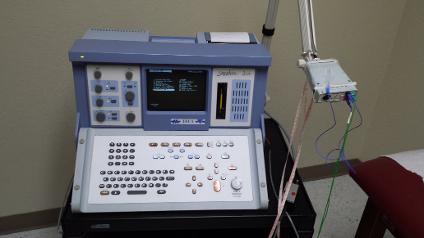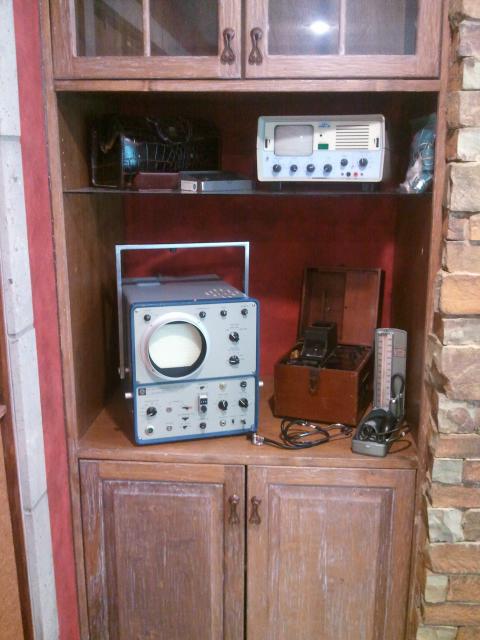
Welcome to my little museum of EMG machines. Over the years I found myself collecting old EMG's, and fixing them up, and making missing bits for them, and generally have taken it up as a hobby. Not a very useful hobby - except I can still use some of them clinically, and display them as antiquities as well.
I'd like to thank all the techies that were able to give me advice and help me along with the restorations and repairs. PB
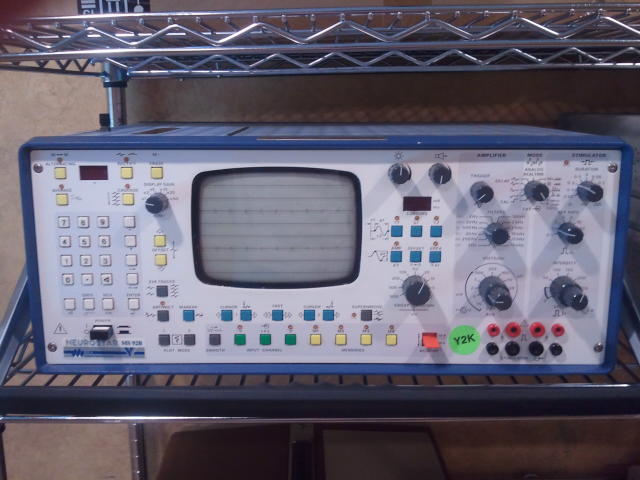
Teca Neurostar MS 92b - circa 1980's - 90's - 2 channel (still) analogue unit - with many possibilities, including evoked potentials etc - all manual settings, but had some capability for calculations built in. Has a built-in Alps multicolor pen plotter as the printer ( just like the old commodore computer! See link...
http://www.commodore128.org/index.php?topic=1405.0
pens very hard to find ). Was a high grade research unit in it's day - preamp PA92b (+/-15v - 8 pin DIN) but with my "Tecaverter" (see below - right) I can use the old preamps! Like the PA62A below! a 5 (6) pin DIN - 12v unit!
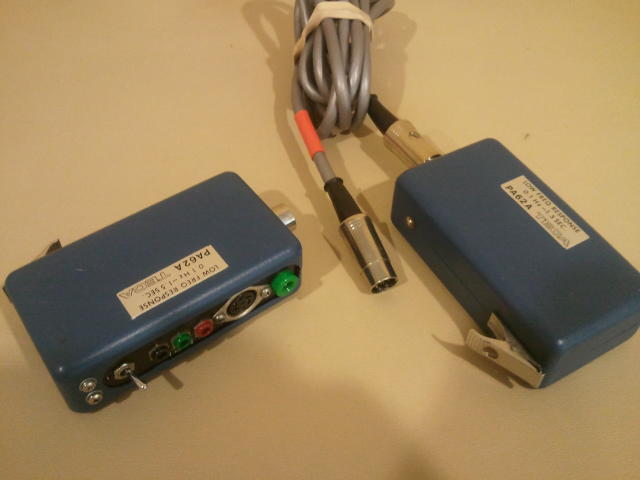
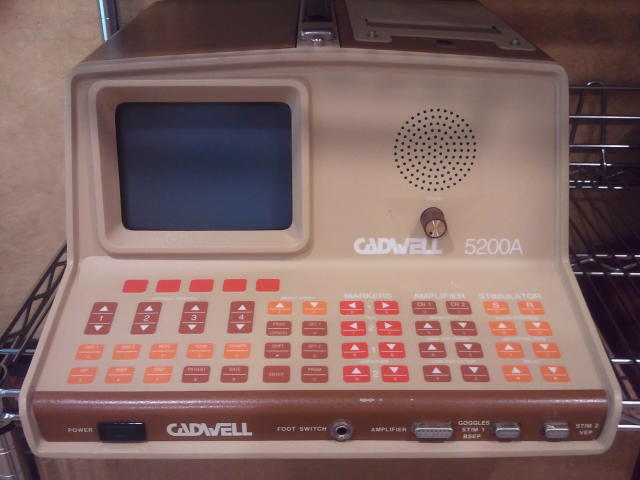
Cadwell 5200A - circa 1980's - 90's - ROM based - a very popular simple, and affordable machine of the day - accessories below. Has the basic routines preprogrammed on ROM, and it looks as if more advanced ROM packages were also available. Removable ROM / EPROM card. Also has a built-in Alps pen plotter, one color. Hard to find the pens for it, but I found some regular ball points that I can cut down and make work! And I've seen one fella take a Sony thermal printer and adapt it to a 5200 that had a video out. And the folks at Cadwell, especially the older tech guys who know the old instruments are more than helpful. I was impressed with the help they gave me when I was refurbishing an old Excel Plus years ago. (I got rid of that - too buggy - DOS based).
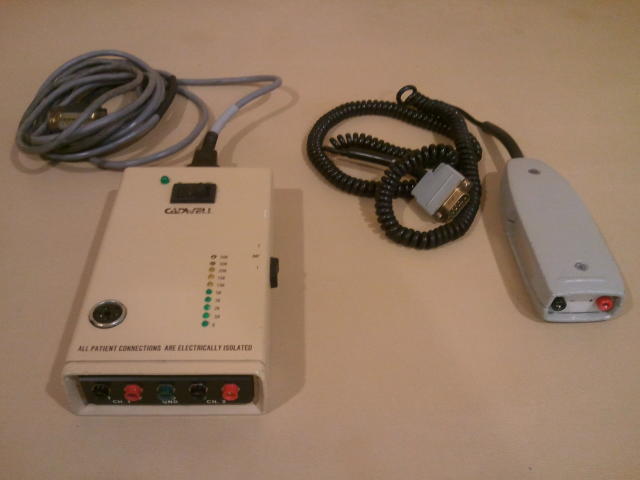
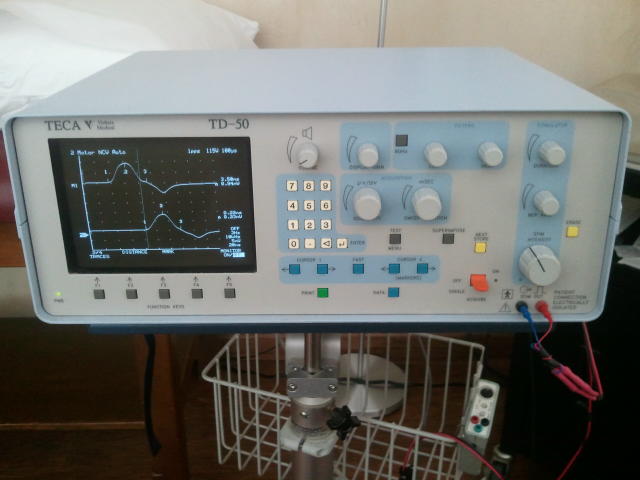
Teca TD-50, circa 1990's. ROM based - pre-programmed basic tests (more advanced ROM / EPROM were available once upon a time, and are on a removable card like the Cadwell), auto latency marking and everything. Nifty. Prints out to a parallel printer. Laser or jet. I was trying to get a Seiko mini thermal to work with it, and Seiko was very helpful in trying to help me, but alas the printer can't understand PCL-5, which it has to to work. I'm using instead a funny device I found; a German 1980's era "Infralink", a parallel device set that transmits the signal by infrared to the printer. It actually works well. By the way this TD-50 uses a Hirose 14 pin connector on the preamp (+/- 15v). A big change from the DIN plugs up to now.
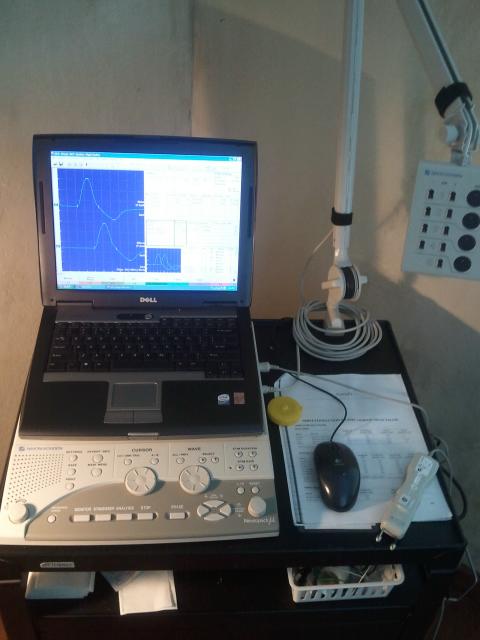
Nihon Kohden MEB 9104 - Modern Windows notebook based unit. (I still like the older analogue/digital hybrid units better.) The report print-out part of the program is buggy, and NHK isn't supporting it well. They seemed to have dropped the ball on this one. But at least they do support it generally with advice and direction, and do try to be helpful, and they don't lock their software with encryption diskettes like Nicolet, which is very annoying.
I still prefer the older ROM based analogue digital hybrid units as I said - much more of a natural and intuitive interface in a hardy no-crash all-in-one box infrastructure. Why doesn't someone make one of those still? Keep it simple - it's always best. And in a way - I think that the in-training residents and fellows would be better served learning to do the studies on the older units, where the parameters and setups are manual, so they get a deeper understanding of the test and the physiology. Of course I also believe everyone learning to drive should learn on stick-shift for the same reason - would make better drivers of them. Am I getting old?

Teca B2 - circa 1960's - Tube unit. Simple oscilloscope, a true classic. No separate preamp, just a "tuna-can" input box for the leads, per an old Teca guru that was good enough to talk to me about the old units. The stim handle though had a rheostat , or potentiometer?, in it for adjusting stim output. (Like the LBM below).

Teca B9 - circa 1970's- a transistorized oscilloscope - even had some ic's - no trace persistence, but had a latency index control with a nifty digital display - lots of shocking done to get the latencies in the old days I guess. PA 89b preamp (+/-12v - 7 pin DIN). See that ziplock to the right of it? It's a bag of re-usable EMG needles! With sharpening stones! I also have the original manual and sales sheet! (I'll be scanning it and putting it up soon) It came with everything. Amazing shape.
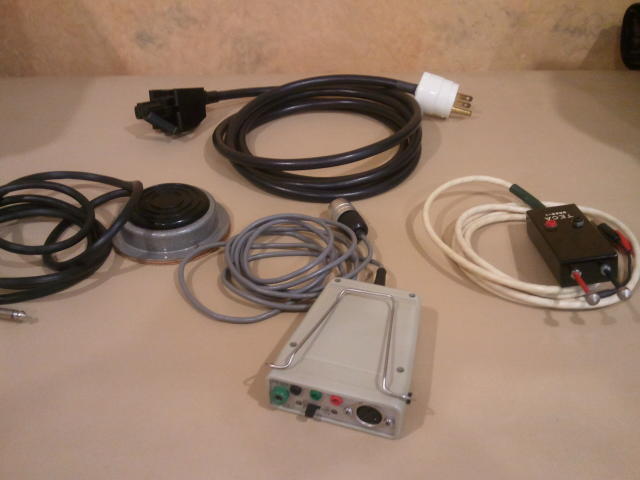
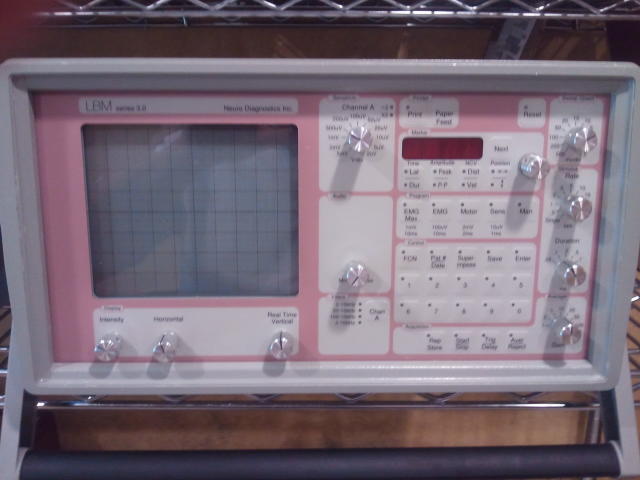
LBM Series 3 - circa 1990's - nice high-end early ROM based unit. Very adjustable storage scope-like design. But with auto-cursors too! And routines for F-wave and Rep Stim. Built-in thermal printer. Accessories below. (Some improvised). Support wise, They got bought up by Bio-Logic Corp - and they got absorbed by someone else - and so the LBM info is lost in the ether. There is a tech or two out there somewhere with the old manuals and such, but working for resellers and unreachable.
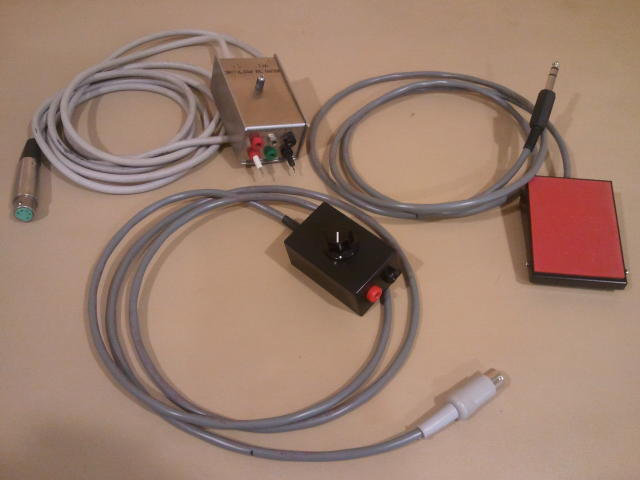
LBM preamp and my improvised foot-pedal - as it's nonstandard (stereo instead of mono plug)- and improvised stim handle controller - had to figure out this odd 2 diode half-wave rectifier 'semi-circuit' they had floating about on the inside of the unit at the socket end, but eventually it made sense.
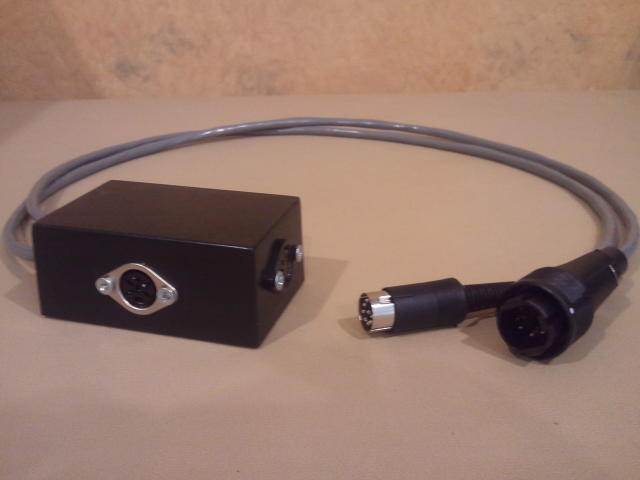
My 'invention" - the "Tecaverter" - can adapt the +/- 12v to +/- 15v from 5 pin or 7 pin to 8 pin and 14 pin - to use old preamps with newer units! I've worked out all the pin-outs, and built a simple little adjustable double voltage divider, for the negative and positive voltages. Nothing earth-shatteringly brilliant, just a simple and utilitarian solution to a problem.
Dantec Cantata - another 1990's era ROM based unit. Was a work-horse, it was my daily machine for years. It's a bit bulky, but well designed, and with good protocols, and easy intuitive adjustments. Built-in thermal printer. I made the foot switch and the stim probe for it. Support for this older unit is non-extant. No one remembers a thing at Dantec. Or won't admit it anyway.
